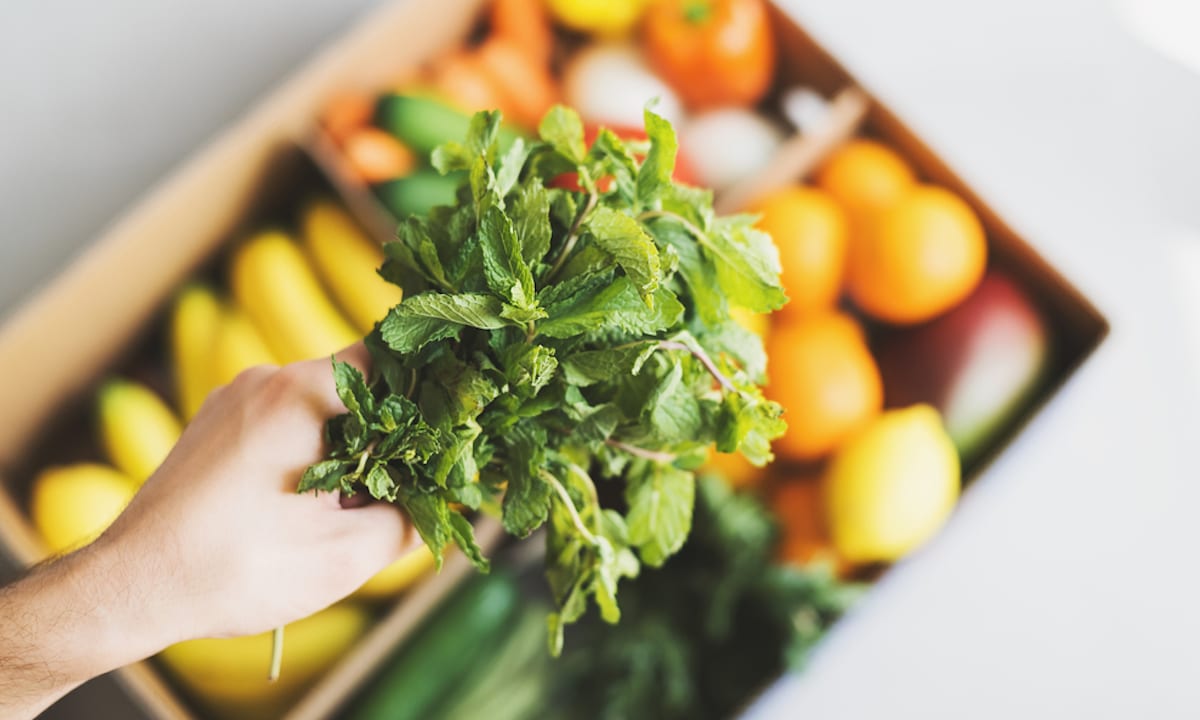eGrocer Uses Predictive AI To Lower Prices And Boost Margins

The grocery app, Farmstead, uses artificial intelligence (AI) to cut costs and boost margins.
As the grocery delivery wars continue to escalate, with tens or even hundreds of millions of dollars pouring in for eGrocery platforms and solutions providers, the space remains shockingly under-penetrated in the United States. These services can be prohibitively expensive for many consumers, with the burden of the cost outweighing the benefit of the convenience. This is where grocery app Farmstead comes in: Using its predictive artificial intelligence (AI) software, the eGrocer is able to operate efficiently enough to keep product prices low and keep delivery free.
“The ability to predict means that we control the experience — and the more the experience is under our control, [the more] we can deliver customers a phenomenal experience, and the more customers get a phenomenal experience, the more they tell their friends,” Pradeep Elankumaran, co-founder and CEO of Farmstead, told PYMNTS in an interview. “And it’s a pretty nice flywheel — as more customers show up and our margins improve, we have the option of lowering prices to increase even more customers.”
The service recently launched in Raleigh-Durham, North Carolina, its third market after Charlotte, North Carolina and San Francisco, California.
Optimizing Inventory With Predictive AI
The company uses its proprietary Grocery OS software to optimize three key processes: inventory, picking and packing, and last-mile logistics. “We’re essentially a prediction company that determines in very short periods of time what is going to happen so that we can control the costs of that outcome,” explained Elankumaran.
He used the example of basil, a costly and highly perishable product but one that is essential for most grocery stores. The software takes into account the 50-mile delivery radius, Farmstead’s high probability of week-over-week growth, consumers’ previous basil-buying data, and the product’s perishability to determine how much to stock. Accordingly, the company’s food waste is under 5 percent compared to the average supermarket’s 30 to 35 percent, according to Elankumaran. He added that, because of this ability to efficiently sell fresh perishables, Farmstead’s margins are in the 32-37 percent range, compared to other stores’, which “are usually in the 20s.”
This software is a key part of the company’s business, independent of the consumer-facing online store. As Elankumaran explained, “We are building two things, both interlocked. The first one is an online grocery brand called Farmstead, which is very popular with a mass-market audience, and the second part of it is the technology that powers Farmstead … and we’re expecting to see significant growth there as well.”
The Digital-Native Advantage
With its tech-optimized distribution, Farmstead is able to reach a consumer who is traditionally overlooked by leading online grocers. “We focus primarily on the mass-market U.S. customer,” Elankumaran explained. “These are the folks who generally shop at three to four stores a week, and have a $100 to $150 budget on average … For these customers, historically online grocery has not really been a viable option, because it requires them to pay more than what they would want to pay for their weekly budget.”
He added that traditional grocers that have “historically done pen-and-paper work in brick-and mortar-facilities” may have a difficult time keeping up with digital newcomers. “Supermarkets are not a great place to do eCommerce,” he noted. “There’s no guarantee on inventory, for example, because supermarkets typically don’t have good inventory control, and they don’t know how many particular items are on the shelf.”
Meanwhile, Farmstead is digitized not just in its software, but also in its facilities. The company uses “Farmstead Hubs,” which Elankumaran described as “dark stores” and as micro-fulfillment centers (MFCs). He explained that these are “extremely inexpensive and fast” to set up — spaces can be up and running within 14-17 days “from when we get keys in hand.” These hubs are also set up with Grocery OS-enabled apps integrated into employees’ pick-and-pack and delivery processes. Given the inexpensiveness and speed of opening these hubs, Farmstead is planning on opening many locations this year throughout the U.S.
“All these pieces put together … [are] really the basis of reaching per-order profitability,” said Elankumaran. “And we are at a break-even point in the Bay Area right now, which is the most expensive market to do this in the entire U.S. And I do believe it is the first time that any mass-market online grocer has hit that particular milestone.”
Building The Habit
While expanding to new areas and attracting new customers is important, so is retention — grocers are uniquely positioned among retailers to become a regular habit, a key part of consumers’ routines. One way that Farmstead does this is with its “Weekly Program.”
“We offer a very robust, almost utility-like, consumer experience that customers can lean on, and as a result, the majority of our customers opt into a weekly program,” said Elankumaran. “…They can pick a delivery day and a delivery slot, [and] we bring them whatever products they choose on a refill-and-save [model], where they pay less for getting the same product over and over.” He noted that this program has 50 percent retention over eight months, “so it is a hit, for sure.” This success also comes back to Farmstead’s software enabling an affordable and reliable experience for consumers.
“The dynamics of Weekly — it’s not just about the ability to build that product, it’s also about our ability to produce a perfect order to your doorstep at the time that we indicate it,” said Elankumaran. “….It’s extremely important that we build the right software to make the whole thing work out. That’s really where we shine.”
Read More On Payments:
- Worldline Partners Selfly Store on Contactless Vending Offering
- Skipify’s Shrauger on Moving Past Wallets to Digital Identity as Payment Credentials
- Embedded Finance, Online Platforms Shape This Week’s B2B Innovations
- Discover: Tokenization Removes Friction for Card-Not-Present Transactions